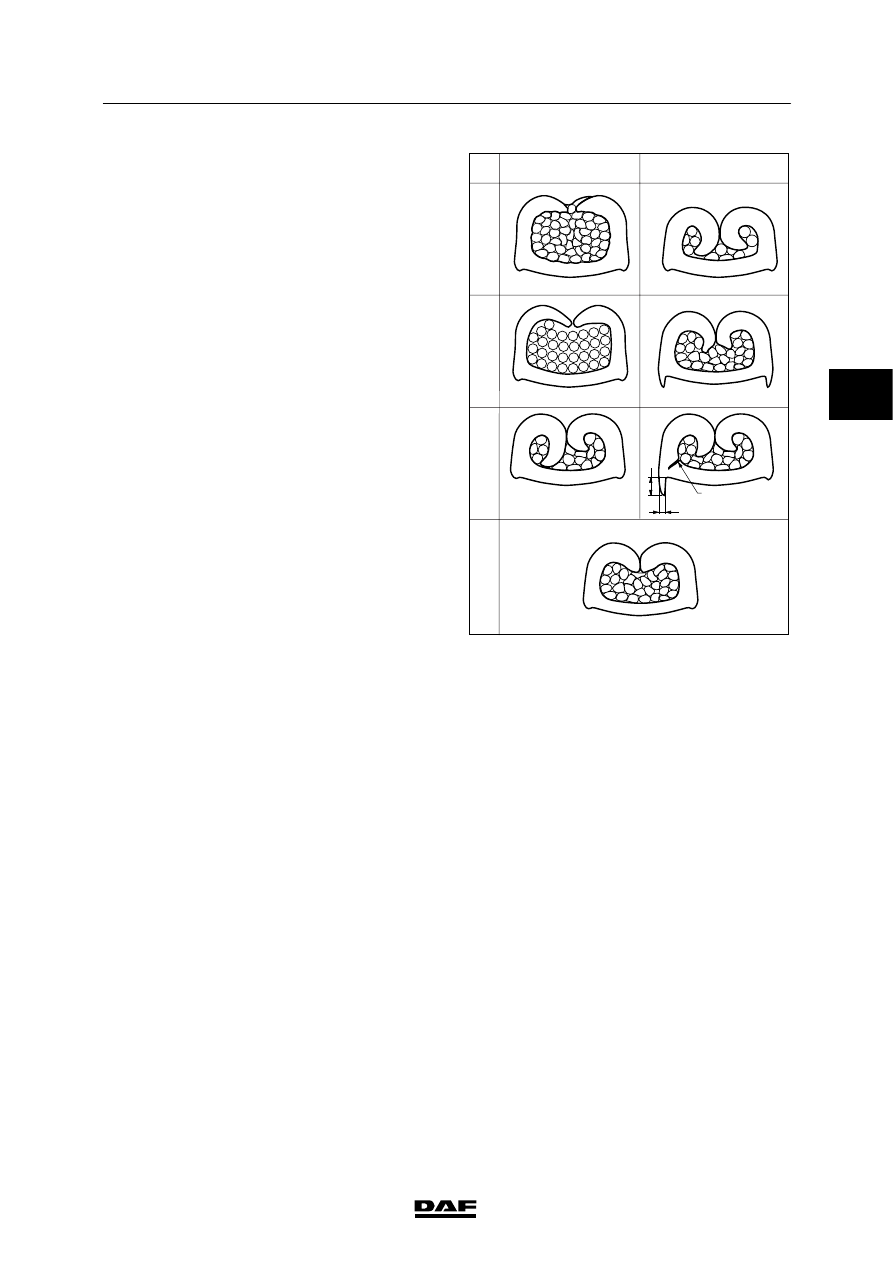DAF CF65, CF75, CF85 Series . Manual - part 504

5
CF65/75/85 series ≥0E621376
Removal and installation
REPAIRING WIRING
2-11
Copper connection
1A.
Wire diameter too large
1B.
Wire diameter too small
2A.
Crimp height too great (hole in crimping
tool too large)
2B.
Crimp height too small (hole in crimping
tool too small)
3A.
Asymmetric crimping
3B.
Asymmetric crimping
4.
Proper contact crimping
S
=
material thickness
x
=
cracking
1A.
There is a risk that copper
conductors could stick out, which
would adversely affect the fixed
position of the other copper
conductors.
This may result in a short circuit and
loose contact.
1B.
The contact may crack and the
copper conductors may not be
sufficiently fixed in the contact.
2A.
Copper conductors are not
sufficiently fixed in the contact. The
wire will come loose of the contact.
2B.
The contact will be damaged. The
contact may crack after some time
and the wire will then come loose
from the contact.
3A and B The contact will be damaged and the
copper conductors are not fully fixed
in the contact. The wire may come
loose. The height of any bulge on the
contact may not exceed the material
thickness of the contact. The width of
this bulge may not exceed half the
material thickness.
E501494
1
A
B
2
3
4
Bmax=1/2S
X
Hmax=S
3
200404